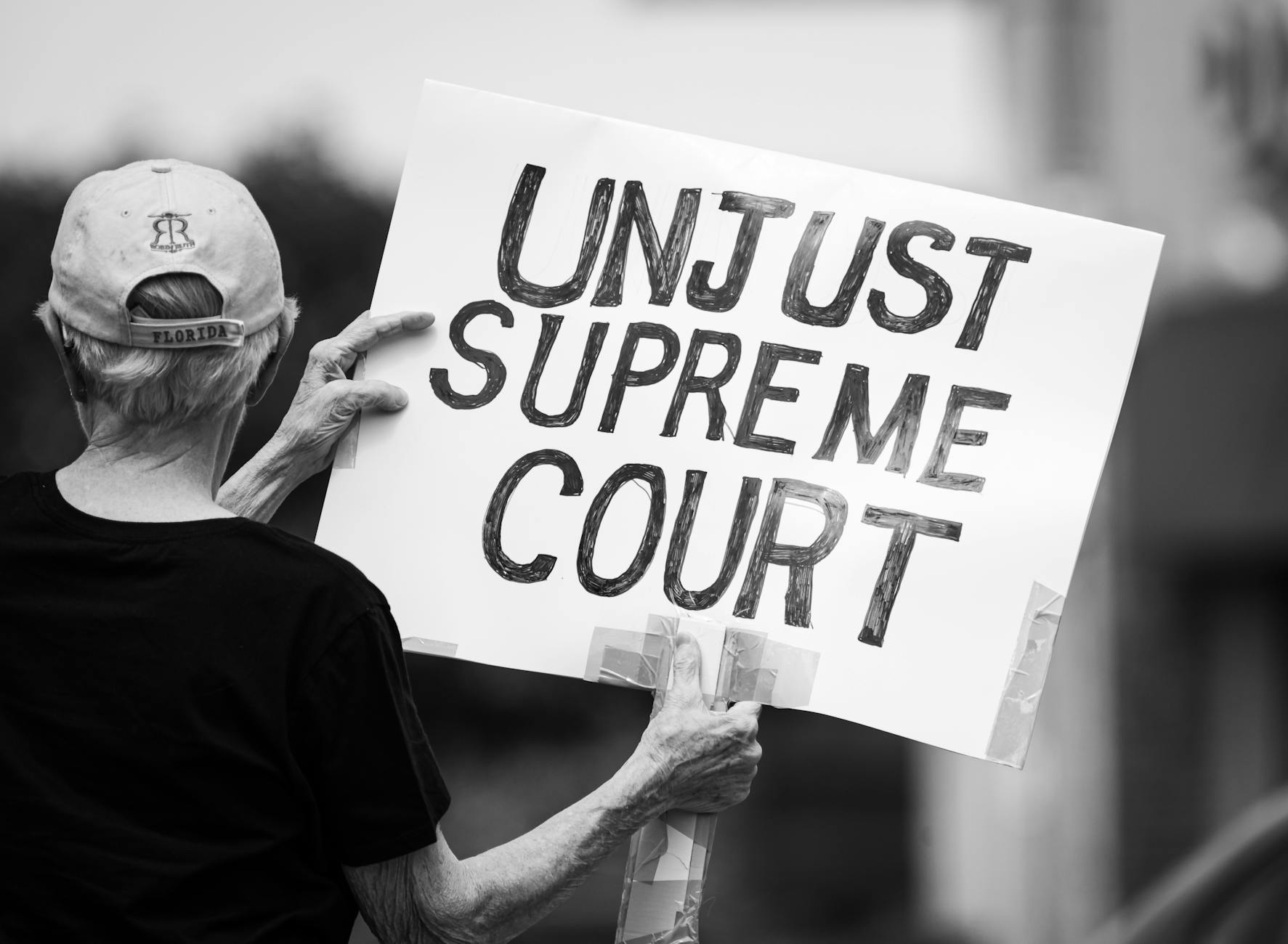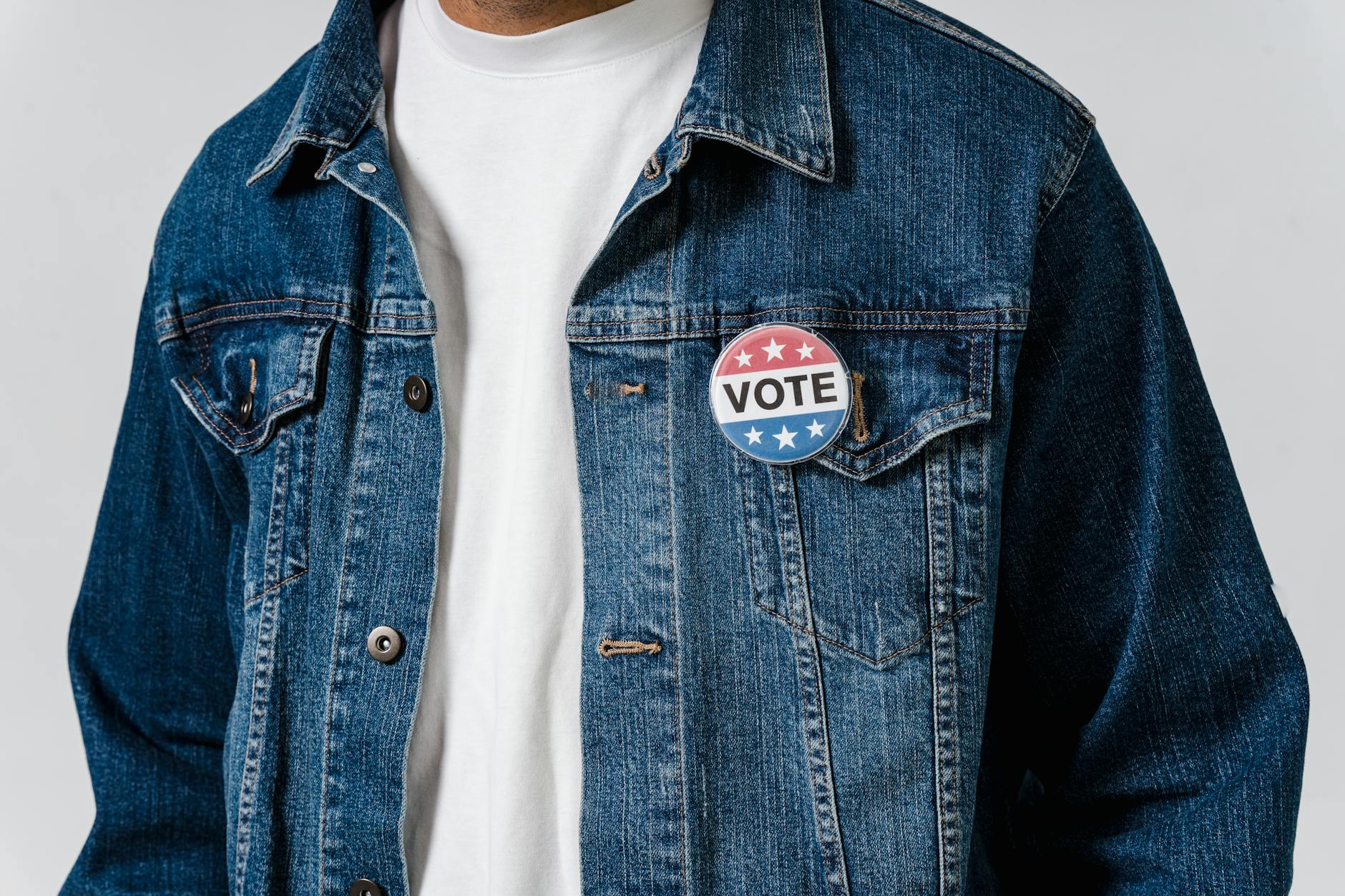This week saw a flurry of important cases regarding LGBTQIA+ rights, ranging from same-sex marriage to bullying. Here are the most important highlights regarding recent federal decisions on marriage equality, transgender passports, and anti-transgender bullying at school.
Supreme Court Refuses to Hear Kim Davis Case, Protecting Same-Sex Marriage Rights – for Now
In an unforeseen turn of events, the Supreme Court declined to review Kim Davis v. David Ermold et al. The case held the potential to overturn Americans’ right to marriage equality since it centered around the ability of court officials to deny marriage certificates to same-sex couples based on religious belief.
Who Is Kim Davis and Why Her Case Still Matters
Davis and conservative allies were hopeful that the Supreme Court would oversee the case, paving the way to overturn Obergefell v. Hodges and the Respect for Marriage Act. In her petition to the Court, Davis’s legal team cited the previous 2010 decision in Snyder v. Phelps to defend the Westboro Baptist Church’s ability to picket a military funeral under the First Amendment.
Kim Davis was a Kentucky county clerk elected in 2014 and originally achieved notoriety in 2015. Davis had intentionally denied marriage certificates to queer couples within Rowan County in the aftermath of Obergefell v. Hodges, citing her religious beliefs allowed her to act “under God’s authority.” Quickly after, Davis refused to follow federal orders by the Court of the Eastern District of Kentucky and was held for contempt in jail for six days – which she believed made her a martyr.
After being the laughingstock of the nation in 2015, Davis largely disappeared; she was defeated by Democrat challenger Elwood Caudill Jr. in 2018 and forced to pay $360,000 to the queer couple she had denied. Yet, in her mind, Davis was always the victim, and the Supreme Court’s decision to federally legalize same-sex marriage was a direct attack on the Christian faith.
“I never imagined a day like this would come, where I would be asked to violate a central teaching of Scripture and of Jesus Himself regarding marriage. To issue a marriage license which conflicts with God’s definition of marriage, with my name affixed to the certificate, would violate my conscience.”
– Kim Davis regarding her position as an elected county clerk post-Obergefell.
In 2015, newly elected Kentucky Governor Matt Bevin issued an executive order that eliminated the names of county clerks on marriage certificates. Bevin had hoped the decision would ease the concerns of individuals like Davis, who believed their documented name indicated approval of same-sex marriage. It had worked – Davis and her attorneys immediately dismissed their appeals.
Issues followed when Davis refused to pay legal fees to the same-sex couples who had filed lawsuits against her. Davis and her legal team asserted that they had won in a legislative victory via the executive order and therefore were not required to pay damages; Rowan County stated the local government could not pay for the legal damages accrued by a single county clerk. The federal appeals court determined in 2017 that the couples were entitled to compensation.
By 2019, Governor Bevin had made a public statement that the State of Kentucky would not pay Davis’s legal fees, “Only Davis refused to comply with the law. [Taxpayers] should not have to collectively bear the financial responsibility for Davis’s intransigence.” These back-and-forth actions continued for several years until this July. Emboldened by the Supreme Court’s decision to overturn Roe v. Wade and national abortion access, Davis petitioned the Court to consider her case.
Renewed Challenge to Marriage Equality
However, the Supreme Court denied Davis’s petition. For Davis, this means she is now required to pay $360,000 to the same-sex couples affected by her decisions as county clerk without assistance from the State of Kentucky. For the rest of America, this decision preserves the integrity of marriage equality – at least temporarily.
Out of the nine Supreme Court Justices, only Clarence Thomas has vocalized a desire to revisit Obergefell v. Hodges. Immediately after the overturn of Roe v. Wade in 2022, Thomas stated he believed the Court should revisit Obergefell since both cases were decided on similar grounds. Beyond Thomas, the other Justices have not indicated any plans to reconsider marriage equality – and even hard conservative justices like Alito have stated that the Court is not amenable to overturning marriage equality.
Beyond the Supreme Court, nine states have proposed legislation that would create limitations on marriage equality within the last year. Since their victory on abortion, conservatives have rallied against marriage equality as one of their next targets. While same-sex marriage would continue to be federally protected under the Respect for Marriage Act of 2022, an overturn of Obergefell v. Hodges would allow many states to stop recognizing same-sex marriages as equal to their heterosexual counterparts.

Supreme Court Reverses Pause on Trump’s Transgender Passport Order
The Supreme Court has officially reversed the decision by federal Judge Julia Kobick of Massachusetts, which had paused the Trump administration’s requirement that transgender Americans use passports based on the sex assigned at birth, regardless of current legal or medical documentation.
What the Supreme Court’s Passport Ruling Really Means
The Trump administration had made the decision via executive order extremely early in his second term, which was immediately received with backlash. Kobick and dozens of legal advocates argued that mismatching identity documents unfairly outs transgender people when traveling abroad, putting them in unnecessary danger. Executive Order 14160 (Protecting the Meaning and Value of American Citizenship) was faced with several lawsuits, including by the ACLU in Orr v. Trump, and Judge Kobick stated a temporary pause to the executive order was necessary while the lawsuit was settled.
This news is rightfully scary, but these are the key facts to keep in mind:
- The Supreme Court reversed Judge Julia Kobick’s pause. The Supreme Court did NOT determine the executive order’s constitutionality nor make any determination regarding the active lawsuits it is battling. Lawsuits via the ACLU and other legal powerhouses are still active and pending.
- This decision does NOT prevent transgender people from obtaining passports. Transgender people are still entitled to obtain and renew passports even under the executive order, although these passports will be flawed with inaccurate information based on one’s sex at birth.
- All passports submitted or renewed will be documented with the sex one was assigned at birth, regardless of legal, social, or medical transition status. All passports will continue to be issued this way until either the executive order is deemed unconstitutional or revoked by a succeeding President.
Executive Order 14160 impacts more than just transgender Americans. Before Kobick’s pause, federal workers within the Department of State lamented that the order caused excessive bloat to their workload during a time when Elon Musk had taken over the White House to supposedly eliminate bloat. The order requires thorough research into every single passport applicant to determine their sex assigned at birth – including presumably cisgender applicants.
Many legal experts expected Trump to revoke the Biden executive order that allowed Americans to self-identify as nonbinary via an “X” marker on passports. It was unexpected that Trump would immediately revoke transgender Americans’ access to updated passports entirely – the Department of State has allowed transgender people to update their passports since 1992 under George H. W. Bush, when submitted with sufficient documentation of medical transition. Since 1992, the process has evolved as each state has created rules and regulations on updating gender information on birth certificates.
Did you know?
It wasn’t until 1976 that US passports even obtained sex or gender information. That’s nearly two hundred years!
Why This Ruling Endangers Transgender Travelers
The Supreme Court issued the reversal on the basis that biological sex information does not put transgender people at higher risk – which is why media outlets like Bloomberg have stated the Supreme Court is fundamentally illogical. Flawed gender information limits transgender individuals from moving freely throughout the world and inherently puts us at risk.
In mild-mannered and relatively safe travel destinations, Executive Order 14160 means border agents will be unable to quickly verify the authenticity of transgender visitors. A transgender American visiting the European Union will have sex information that does not make sense based on their current gender expression, which makes a very real passport seem fake or stolen.
In hostile regions, Executive Order 14160 automatically outs individuals as transgender. The Supreme Court, believing that sex information does not put us at risk, does not make it a reality. There are dozens of countries that treat transgender identity as a jailable or killable offense. While transgender travelers are supposed to be safe in internationally designated spaces such as airports, we are not always safe in those spaces.
“Such senseless sidestepping of the obvious equitable outcome has become an unfortunate pattern. So, too, has my own refusal to look the other way when basic principles are selectively discarded. This court has once again paved the way for the immediate infliction of injury without adequate (or, really, any) justification.”
– Justice Ketanji Brown Jackson in her dissent of the Supreme Court’s decision to reverse Kobick’s pause.
Domestically, ICE agents have been able to deport alleged illegal immigrants without due process. Similarly, there is little way to determine whether a foreign country is truly abiding by international standards when transgender travelers pass through during a layover. Each time an individual flies abroad, they must go through security at each location – even if it’s not their final stop.
From personal experience, it is fully within reason to believe transgender people will be victimized. I’ve been harassed numerous times by TSA agents in large-scale airports like O’Hare, Kennedy, and Hartsfield simply because my crotch did not align correctly with their 3D imaging software – even though my documentation is fully updated.
What Comes Next for Transgender Americans
The decision by the Supreme Court is disheartening, but not all is lost. The ACLU will continue to advance against the Trump administration in Orr v. Trump. It is predicted that the Supreme Court will likely hear the case in January 2026 to determine the fundamental question of whether the executive branch has the overreaching power to make decisions that can easily put citizens at harm.
I advise readers to use caution when applying for passports at this current moment.
- If you currently have a passport and are looking to renew, wait until Executive Order 14160 ends unless you absolutely need to leave the United States.
- Once Executive Order 14160 ends, immediately renew or obtain a passport if you have the financial means to do so.
- If you currently do not have a passport, use the following resources to consider whether contingency plans are needed. Moving is never an easy choice, but having access to a passport, even if inaccurate, allows you to seek refuge if things become dire.
Federal Appeals Court Rules Intentional Misgendering Isn’t Bullying
The U.S. Sixth Circuit Court of Appeals determined that purposeful and repeated misgendering of transgender students by peers does not constitute bullying or harassment. The case was brought by the far-right conservative group Parents Defending Education, which contacted the Olentangy Local School District in 2023 to ask whether purposeful misgendering was allowed since they viewed it as integral to their religious practices.
Olentangy Local School District replied, stating such actions would likely be considered bullying, but alternative accommodations could be made to prevent students from interacting with transgender classmates. Parents Defending Education was dissatisfied with this outcome and sought legal action.
Defending Education v. Olentangy Local School District lost in the lower courts twice before reaching the Sixth Court of Appeals. At that point, Parents Defending Education misleadingly reframed transgender identity as a purely political issue, and the use of “biological pronouns” did not lead to emotional harm.
Defending Education v. Olentangy Local School District’s current outcome is similar to the Supreme Court’s decision to end the pause on Executive Order 14160. To these judges, stating “objective biological reality” does not constitute genuine harm.
This news is upsetting and frustrating. It encapsulates centrist misunderstandings regarding misgendering. Transgender people are fully aware of our “biological truth,” just as we are aware of the complex nature of biology after middle school. Yet, humans are more than mere biology. There has never been any singular individual who has truly fit into every single gender role assigned to their biological sex. The pursuit of fitting into those roles is illogical and a prison – toxic masculinity and toxic femininity create emotionally unhealthy humans and generations of harm.
Conservatives love playing the Devil’s advocate when they state they are simply being objective to biological reality when dismissing transgender identity. Very little of the world is actually objective – society is filled with subjective and relative thinking. After all, money is just pieces of paper that we’ve agreed have meaning; we agree to refer to a woman by a new last name as soon as she’s married, regardless of the name she was born with. Saying “Happy Holidays” on December 23rd is objectively more correct than “Merry Christmas,” but conservatives are the first to put up a fight about hurt feelings.
What is the purpose of harming others? Most transgender people won’t take great offense to be occasionally misgendered or deadnamed while in the early part of their transition. It hurts, but it’s to be expected when others are adjusting to their new identity. It hurts every time we are misgendered, but we internalize it and move on with our lives under the assumption that the misgendering was NOT intentional.
Intentional misgendering is its own distinct problem. From that moment, it is a purposeful act of harming others since we are intentionally using language we know will hurt. What is the point of reminding transgender people of our “biological realities,” if it is not to belittle and demean us? Do you expect us to believe you’re making such comments in kindness and good faith?
It is these same individuals who purposefully misgender transgender people and use pejorative slurs and call us less than human. These acts do not make you appear superior because you are quoting biological truths; they make you morally repulsive because you’re presenting a complete lack of empathy as superiority. These individuals are malicious, not kind, nor truthful.
In another time, several decades ago, these same individuals would have easily argued that certain slurs, such as the n-word, were not necessarily violent when used against Black Americans. Yet, at the end of the day, they are purposefully using a word that they know will cause emotional damage because it is soaked in generations of hate.
Most people are aware that words can hurt immensely. In reality, harsh words can lead people to suicide and mass violence. Transgender youth attempt suicide at a disproportionately high rate compared to their cisgender peers when they lack family and community support – and the decision by the Sixth Court of Appeals will directly contribute towards those rates. How many lives will have been taken in anguish before the Court regrets this decision?
The Sixth Circuit Court’s logic regarding Defending Education v. Olentangy Local School District is troubling. When releasing their statement, the Court stated the Olentangy Local School District was performing a form of “thought control” by not allowing students to purposely misgender peers. According to the presiding judges, the school district is not allowed to take any “side” regarding the “transgender issue,” and creating any policy limiting students in this capacity is taking a side. As mentioned earlier, Parents Defending Education chose to frame the lawsuit as a freedom of speech issue – and they succeeded, making the outcome significantly darker.
This centrist logic is malicious. There are correct and incorrect sides when people debate human rights; the moderate answer is not inherently the right one. A centrist in the 1960s would have advocated segregation as the morally superior answer to Black Americans requesting equal rights versus enslavement and genocide. When Nazis asked whether Jewish individuals deserved to live in the 1940s, there was a right answer – and it wasn’t a centrist one.
The decision by the U.S. Sixth Circuit Court will NOT affect the majority of Americans. As a circuit court, its decision will only affect states within its jurisdiction (Ohio, Tennessee, Kentucky, and Michigan). All schools and universities within those states will have to abide by this ruling unless it is appealed and heard by the Supreme Court.

































